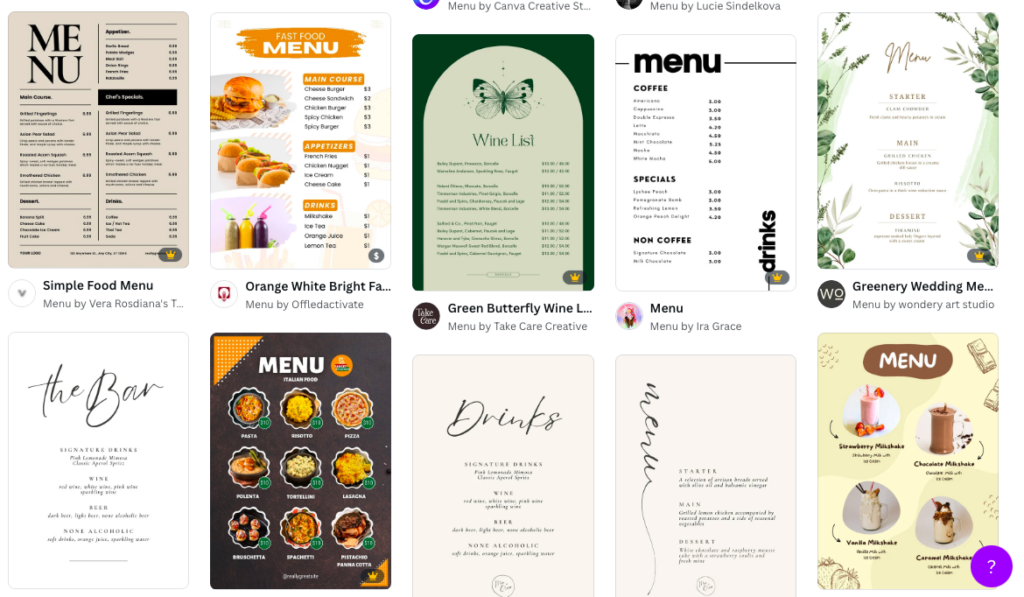7 Best Practices for Food Truck Menu Designs
Food trucks have carved themselves a place in the age of mobile gastronomic pleasures. The techniques for enticing customers have developed with these mobile restaurants. The food truck menu design is crucial to these efforts, and it has emerged as a critical component for encouraging food lovers to try out the offerings!
*Blastoff creates websites for local food trucks at affordable prices! If you need one for your food truck, contact us!
The Importance of Food Truck Menu Design
Before diving into the strategies, it’s vital to understand why food truck menu design is so important. The menu is essentially the identity of your food truck; it’s the first interaction customers have with your offerings, and it creates an impression of what to expect from your culinary craft. Designing a menu that is not only aesthetically pleasing but also effectively communicates your offerings can significantly influence the success of your food truck business.
How to Design a Food Truck Menu

1. Understand Your Audience
Before you start designing, you need to understand who your audience is. What are their preferences? What kind of food do they like? What are their dietary restrictions? This information will inform both your menu choices and your design.
2. Choose a Design Platform
Some several online tools and platforms can help you design your digital menu. These include Canva, Adobe Spark, and others. Choose a venue that suits your design capabilities. Some venues require more design knowledge, so could you pick one that fits your skill level?
3. Start With a Template
Many of these design platforms offer templates. This can be a great place to start if you need clarification on your design. You can customize the template to suit your brand and your needs.
4. Incorporate Your Branding
Just like your physical menu, your digital menu should reflect your brand. This includes your color scheme, logo, and other visual elements associated with your food truck.
5. Include High-Quality Images
People eat with their eyes first, especially regarding digital content. Including high-quality, mouthwatering images of your dishes can encourage people to try them. Remember to represent your food accurately – what people see is what they will expect to get.
6. Make it Interactive
One of the benefits of a digital menu is that it can be interactive. For example, you could include a feature allowing customers to click on a dish for more information, such as the ingredients and preparation method.
7. Update Regularly
Ensure that your digital menu is always up to date. If you’re out of a particular dish or have a new special, update your menu as soon as possible. You don’t want customers excited about a word only to find out it’s unavailable.
8. Test Your Menu
Before launching your digital menu, make sure to test it. Check that all links and interactive features work correctly and that the design looks good on different devices, as customers may view it on a phone, tablet, or computer.
7 Best Practices for Food Truck Menu Design

Here are some best practices and strategies to consider when designing a food truck menu
1. Keep it Simple
Food truck menus should be simple and straightforward. Your goal is to allow customers to understand your offerings and make a selection quickly. Keep your descriptions concise and avoid overly complex culinary jargon. Moreover, limit your menu to a few specialty dishes instead of offering too many options. This also has the benefit of simplifying your inventory and preparation process.
2. Prioritize Readability
Your menu should be easy to read from a distance, as many customers will first glance at it from afar before approaching your truck. Use large, bold fonts and contrasting colors to enhance readability. Also, ensure the text is manageable on the menu. The choice of fonts should also reflect the personality of your food truck. For instance, if you’re running a Mexican food truck, consider a font that echoes cultural aesthetics.
3. Use High-Quality Images
Using high-quality, delicious images of your dishes can significantly enhance the appeal of your menu. However, using real photos of your food is essential, not generic stock images. Customers will expect the food they receive to look like the photos on your menu. If the reality doesn’t match the picture, it can lead to disappointment and hurt your reputation.
4. Highlight Your Specialties
Every food truck has a specialty, which should be your menu’s star. It might be a unique dish, a particular recipe, or a trendy item. Make sure these items are prominently displayed and easily identifiable on your menu. Consider using boxes, borders, or different colors to highlight these items.
5. Incorporate Your Branding
Your menu should align with your overall food truck branding. This includes colors, logos, and even the language style used in the descriptions. Consistent branding creates a unified impression that helps customers remember your food truck. Furthermore, if you have a logo, it should be prominently placed on the menu.
6. Update Regularly
Food truck menus should not be static. You should update your menu regularly to keep it exciting for your customers. Seasonal offerings, specials of the day, and new additions can all make your menu more dynamic. However, while changing the menu, remember to keep your specialties consistent, as they’re often the main attraction for your loyal customers.
7. Leverage Social Media
In the digital age, your menu isn’t just on your truck – it’s online. Consider posting your menu on your social media channels and website. It’s also a good idea to announce any changes or specials on these platforms. This can help draw in customers to check out your food truck online before deciding to visit.
Enhancing Menu Appeal Through Psychology

There’s also a psychological aspect to designing a food truck menu. How you list your items, the words you use to describe them, and even the order in which they appear can all influence a customer’s decision.
1. Strategic Pricing
Avoid using a dollar sign with your prices, as research has shown that it can make customers more aware of the cost. Also, consider using “charm pricing,” which involves reducing the price of an item by a small amount (for instance, pricing something at $4.95 instead of $5.00) to make it appear cheaper.
2. Descriptive Language
A study in the Journal of Consumer Research found that descriptive menu labels increased sales by 27%. Using sensory and emotional words can make your dishes more appealing. For instance, instead of just “chocolate cake,” consider a description like “decadent dark chocolate fudge cake.”
3. The Golden Triangle
Eye-tracking studies have shown that customers typically look at the center of the menu first, then move to the top right and then the top left – this is known as the “Golden Triangle.” Place your most profitable or popular items in these areas.
4. Use of Colors
Colors can evoke emotions and influence behavior. For example, red and yellow are often used by fast-food restaurants as they are seen as exciting colors that stimulate appetite. On the other hand, blue is often seen as calming and might not stimulate hunger as much. The colors you use should match your branding, but it can be beneficial to understand their psychological impact.
Summary
Creating a compelling food truck menu—be it physical or digital—is an art that combines culinary expertise, understanding your audience, creativity, and a dash of marketing savvy. It’s important to remember that your menu isn’t just a list of food items; it’s a vital tool for communication with your customers.
The design process is iterative, so feel free to make changes and tweaks based on customer feedback and what works best for your operations. Keep in mind the current food trends, but always stay true to your culinary roots and brand’s essence.
When looking for inspiration, explore a diverse range of sources. Don’t limit yourself to food trucks serving the same cuisine as you do. Sometimes, the most innovative ideas come from the most unexpected places.
Above all, remember that the goal of your food truck menu is to whet appetites and draw customers in with tantalizing descriptions and appealing visuals. A well-crafted menu showcases your food and tells the story of your brand, inviting customers to be part of your food truck’s journey.
*Blastoff creates websites for local food trucks at affordable prices! If you need one for your food truck, contact us!
